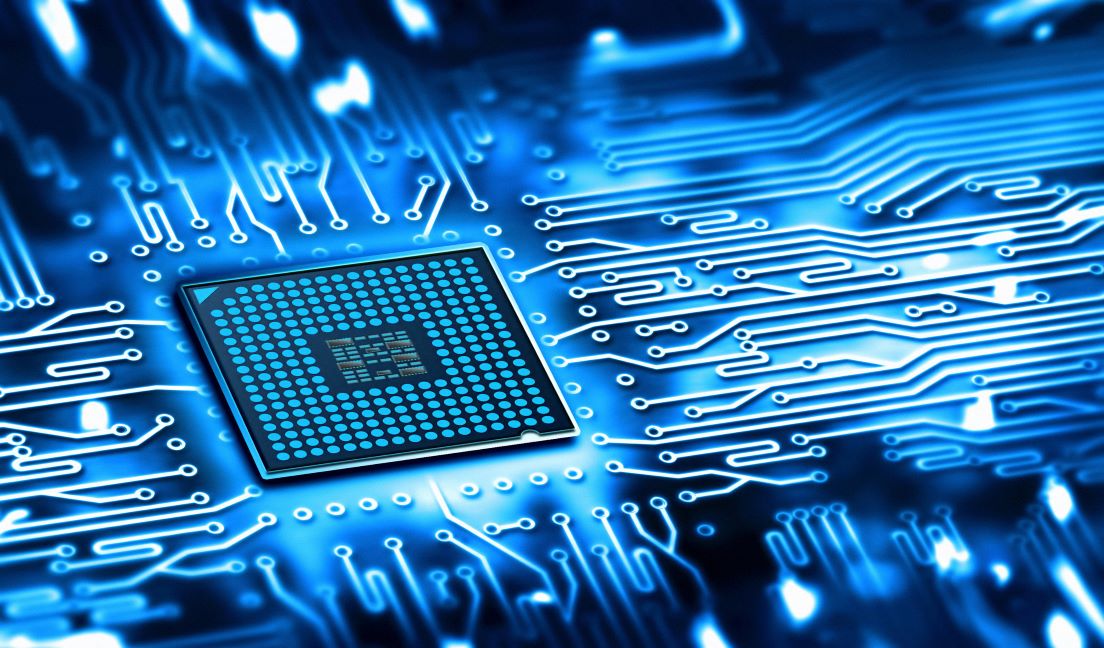To keep ahead of the competition and mitigate the impact of supply chain challenges, microelectronics manufacturers can’t afford to overlook the importance of continued innovation when it comes to water treatment. Julien Puech, Senior Business Developer UV at Evoqua Water Technologies, looks at the critical role of ultrapure water and the benefits of a multistage technology approach on business.

Now more than ever, guaranteeing quality and output levels is vital for microelectronics manufacturers who have endured being at the centre of supply chain challenges for the past couple of years. Today the focus is firmly on maximising production and minimising losses and to help realise these goals it’s time to put ultrapure water (UPW) generation under the metaphorical microscope.
With water an essential component in the manufacturing process, if not treated effectively, to the right UPW level, the results can be costly. High levels of total organic carbon (TOC) may be present in process water and wafer rinse steams and even traces can create a ‘haze’ on wafer surfaces and contaminate the product, rendering them faulty and a financial loss.
We are now seeing manufacturers demanding ultra-low levels of TOC in wafer rinse streams, typically <5 or 1 ppb. These ultra-low TOC specs are driven by several factors including pursuit of greater wafer yields and a switch to smaller chip geometry such as ≤0.07 μm line width. However, to achieve this, UPW needs to be of the highest quality, and this means the systems to generate it must be superior.
The answer is a combination of innovative, highly effective treatment technologies and three of the standout heroes every manufacturing plant should be utilising to generate UPW are ultraviolet (UV), electrodeionisation, and ozone treatment systems.
Innovative technology solutions
Organic molecules that make up TOC are present in a water system via introduction from the makeup water, usually drinking water, as well as the purification process, and can also leach from the plumbing of the distribution system itself. TOC can act as a nutrient for microorganisms. Even small increases in TOC (i.e., 1-5%) can result in large increases in bacteria by providing the nutrients for creation of biofilms and subsequent shedding of bacteria and organics from pipe system walls. Therefore, our UV technology is critical thanks to our lamps which can provide radiation at 254nm wavelength, destroying microbial contaminants and inactivating microbial reproduction, as well as photolysis by reducing TOC at 185nm wavelength.
UV irradiation at 185 nm is extremely aggressive due to formation of hydroxyl radicals, which have a large oxidation potential and chemically attack and mineralise hydrocarbons.
The efficiency of a TOC system is dependent on the output of UV lamps, which play a pivotal role in the oxidation of the trace organics. This is where the Evoqua VT TOC Range of ATGTM UV Generator comes into its own. It’s been specifically designed and engineered for TOC reduction applications in UPW processes.
The lamps are constructed using the finest grade materials to deliver high performance, longevity, and sustainability. The lamps have a long life of 16,000 hours and, due to their high power, the number of lamps required for a given flow rate is reduced. Operators also have variable power control with the series. These industry leading attributes enable operators to reduce both capital and operating costs.
While with 185nm UV systems most organic compounds are decomposed to CO2 and H2O, there are often residual inorganic impurities or weakly charged or ionised compounds present. To remove these ions effectively, deionisation is required. Evoqua is one of the pioneers of a transformative process of continuous electrodeionisation (EDI) using its innovative Ionpure® system. EDI works by combining resin, electricity, and ion-exchange membranes to remove ionized or ionizable impurities - including carbon dioxide, boron and silica. EDI is a continuous low energy consuming process and avoids the need for chemical regenerants required by traditional batch methods of deionisation.
Importantly, using Ionpure EDI systems offers improvements in terms of energy efficiency and safety levels versus traditional methods of deionisation. And its low maintenance requirements make it operationally cost-efficient.
As well as focusing on the most effective individual technologies for UPW generation, the design and operation of the UPW storage and distribution systems are also extremely critical. This is where ozone technology, such as Evoqua’s Pacific Ozone® Series of ozone generators can play a key role. The systems provide residual-free disinfection, oxidation, and sanitisation for systems including the piping loop and storage tanks. So, it’s vital to look at your UPW treatment system is in its entirety to reap maximum operational, cost and sustainability benefits.
It’s time to shine the spotlight on water treatment and ensure UPW generation systems for the microelectronics industry are as sophisticated as its manufacturing processes.
Talk to a partner with a wide spectrum of water treatment knowledge and technology solutions, who can provide the ongoing service and support your facility requires. Contact Evoqua here.
Evoqua UV disinfection generator systems undergo third-party validation testing in accordance with the UVDGM (USEPA, 2006). Validated products are tested to confirm a minimum inactivation equivalent of 3 log (99.9%) for microorganisms in accordance with NSF/ANSI 50 and the UVDGM. Performance is not claimed nor implied for any product not yet validated; unvalidated products use single point summation calculations to provide delivered dose recommendations. Performance limitations depend on feed conditions, overall installed system design, and operation and maintenance processes; please refer to Operations Manuals. For more information: Contactus@evoqua.com
Ozone: Evoqua Ozone Generation systems undergo factory acceptance testing to ensure they are capable of producing the desired ozone concentration, based on operational parameters outline in the Operating Manual. System performance of microorganism inactivation depends on the CT value, pH, and temperature of water. Performance limitations depend on feed conditions, overall installed system design, and operation and maintenance processes; please refer to Operations Manuals. For more information: Contactus@evoqua.com
